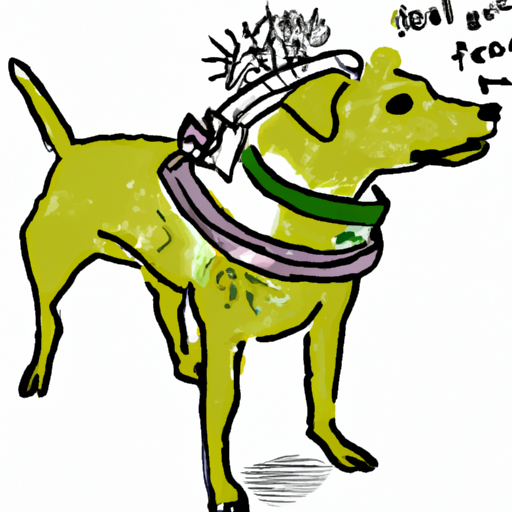If you’re a pet parent, you’re likely already familiar with the nuisance that is fleas. These pesky insects not only cause discomfort for your furry friend but can also pose health risks. One common method of flea control is the flea collar. But how do these devices work, and are they effective? Let’s delve into the details.
Table of Contents
- Understanding Fleas and Their Threat
- What is a Flea Collar?
- How Does a Flea Collar Work?
- Types of Flea Collars
- Effectiveness of Flea Collars
- Potential Risks and Side Effects
- Frequently Asked Questions
Key Takeaways
- Flea collars work by releasing active ingredients that kill or repel fleas.
- There are two types of flea collars: those that emit a gas and those that release ingredients into the dog’s skin.
- While flea collars can be effective, they may have potential risks and side effects.
Understanding Fleas and Their Threat
Fleas are small, wingless insects that feed on the blood of mammals and birds. They can cause a variety of issues for your dog, from simple skin irritation to more serious health problems like anemia or tapeworms. Learning how to properly care for your dog can help in preventing these issues.
What is a Flea Collar?
A flea collar is a device worn around a dog’s neck, designed to repel or kill fleas. They’ve been around for decades and have evolved in their technology and effectiveness.
How Does a Flea Collar Work?
A flea collar works by releasing active ingredients or chemicals that either kill fleas on contact or repel them. These ingredients can be released in two ways:
-
Gas-Based Collars: Some collars emit a gas that repels fleas. This gas forms a protective bubble around your pet, preventing new fleas from infesting. However, they’re less effective at killing existing fleas or those in the larval stage.
-
Absorption-Based Collars: These collars release active ingredients that are absorbed into the dog’s skin and disseminated via the body’s natural oils. When a flea bites the dog, it ingests the chemical and dies.
Types of Flea Collars
Here are the two main types of flea collars you’ll find in the market:
-
Insecticidal Collars: These collars contain ingredients that kill fleas, often within 24 hours of contact. Some common ingredients include imidacloprid, flumethrin, and tetrachlorvinphos.
-
Ultrasonic Collars: These emit a high-frequency sound that is said to repel fleas. However, there’s debate about their effectiveness.
Effectiveness of Flea Collars
While flea collars can be effective at controlling and preventing infestations, their success can vary based on several factors, including the type of collar, the severity of the infestation, and whether other control methods are used simultaneously. Moreover, flea collars typically provide more protection around the neck and head but less towards the lower parts of the body.
Potential Risks and Side Effects
Like any treatment, flea collars carry potential risks and side effects. Some dogs may experience skin irritation, redness, or hair loss at the site of the collar. In rare cases, dogs can have an allergic reaction to the active ingredients. Always consult with your vet before starting any new treatments.
Frequently Asked Questions
Q: Can flea collars be used on puppies?
A: Most flea collars are safe for puppies over 12 weeks old, but always check the product label or consult with your vet.
Q: Are flea collars safe for pregnant or nursing dogs?
A: Some flea collars are safe for pregnant or nursing dogs, but others are not. Always check the product label and consult with your vet.
Q: Can my dog wear a flea collar all the time?
A: Flea collars are designed to be worn continuously, but it’s always a good idea to remove them during bathing or swimming to prolong their effectiveness.
Q: How long does a flea collar last?
A: Most flea collars are effective for 3 to 8 months, depending on the brand and type.
In conclusion, flea collars can be an effective tool in your arsenal against these pesky parasites. However, they should be used as part of a broader approach to flea control, which includes regular grooming, proper diet, and cleanliness in your pet’s environment. Check out more tips on how to keep your dog healthy and happy.



